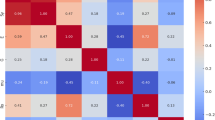Abstract
Selection of the proper materials for a structural component is critical in engineering design. Existing design procedures may currently be sufficient, especially where experience exists, but fierce industrial competition is spurring the search for improved methods and tools. The main drivers are quality, life-cycle cost, time-to-market and material selection. Improved design efficiency and accuracy may depend on specific material selection. This paper discusses the one of the Concurrent Engineering integration strategies i.e., “selection of material” using neural networks that can be adapted for successful integration within industry and beyond using XML and web services. The introduction of computerized design and analysis systems offered the promise of selecting the right material for an optimized design early in the product development cycle. This requires consistent and high-quality material information throughout the design to manufacturing process.










Similar content being viewed by others
References
Barnard, P: Materials database save time. Material Database. News Issue 2 (1996)
Prasad, B.: Concurrent engineering fundamentals, vol II. Integrated Product and Process Organization. Prentice Hall, New Jersey (1996)
White, P.J.: Materials selection: is the machine really smart enough? In: Proceedings of Society of Plastics Engineers Conference, Hartfort, Connecticut (1995)
Fringer, S., Dixon, J.R.: A review of research in mechanical engineering design, part I: descriptive, prescriptive, and computer—based models of design process. Res. Eng. Design. 1(1), 57–67 (1989)
Harker, P.T., Vargas, L.G.: Reply to remarks on the analytic Hierarchy Process. by J.S.Dyer. Manag. Sci. 36(3) (1990)
Jee, D.-H., Kang, K.-J.: A method For optimal material selection aided with decision making theory. J. Mater. Des. 199- 206 (2000)
Fausett, L.: Fundamentals of Neural Networks: Architectures, Algorithms and Applications. Prentice Hall, Englewood Cliffs (1994)
Geol, V., Chen, J.: Application Of expert network for material selection in engineering design. Comput. Indust. 87–101 (1996)
Abraham, A.: Meta-learning evolutionary artificial neural networks. Neurocomput. J. 56c, 1–38 (2004)
Ashby, M.F.: Material Selection in Mechanical Design, 2nd edn. Butterworth-Heinemann, Elsevier, Oxford (1999)
Sapuan, S.M.: A knowledge-based system for materials selection in mechanical engineering design. Mater. Des. 22, 687–695 (2001)
Ham, F.M., Kostanic, I.: Principles of Neuro computing for Science and Engineering. McGrawHill, New York (2001)
Yegnanarayana, B.: Artificial Neural Networks. Prentice Hall, India (2001)
Masters, T.: Pratical Neural Networks Recipes in C++. Academic press, NewYork (1993)
Widrow, B., Lehr, M.A.: 30 Years of adaptive neural networks: perceptron, madaline and back propagation. Proc. IEEE 78(4), 1415–1442 (1990)
Haykin, S.: Neural Networks: A Comprehensive Foundation. Prentice Hall, New Jersey (1999)
Freeman, J.A., Skapura, D.M.: Neural Networks Algorithms, Applications and Programming Techniques. Addison-Wesley, Reading (1991)
Boothroyed, G., Dewhurst, P., Knight, W.: Product Design for Assembly. Boothroyed Dewhurst Inc., Wakefield (1991)
Acknowledgments
This work is partially supported by Department of Science & Technology, Government of India, Technology Bhawan, New Delhi-110016.
Author information
Authors and Affiliations
Corresponding author
Appendix A
Appendix A
1.1 A-I summary of back propagation algorithm
-
1.
Apply the input vector X(n) to the input units
-
2.
Initialize the weights randomly
-
3.
Calculate the net-input values to the hidden layer units
$$\begin{aligned}&\hbox {net}\_{\mathrm{hidden}} = \sum _{i=1}^{N} {w_{ji}^{h}} x_{pi} +\theta _{j}^{h} \\&\hbox {Input}^{*}\hbox {wt}\_{\mathrm{hidden}} + \hbox {bias}\_{\mathrm{hidden}}\nonumber \end{aligned}$$(6) -
4.
Calculate the outputs from the hidden layer
$$\begin{aligned} \hbox {op}\_{\mathrm{hiddenlayer}} = \hbox {I}_{\mathrm{pj}}=f_{j}^{h}(\hbox {net}\_{\mathrm{hidden}}) \end{aligned}$$(7) -
5.
Calculate the net input values to each unit of the output layer
$$\begin{aligned} \hbox {net}\_{\mathrm{op}}&= (\hbox {op}\_\mathrm{hidden~layer}^{*} \hbox {wt}\_{\mathrm{op}}) + \hbox {bias}\_{\mathrm{op}} \nonumber \\ \hbox {net}_{pk}^{o}&= \sum _{j=1}^L {w_{kj}^{o} i_{pj} +\theta _{k}^{o}} \end{aligned}$$(8) -
6.
Calculate the outputs of the output layer
$$\begin{aligned} \hbox {op}\_{\mathrm{outputlayer}} = \hbox {O}_{\mathrm{pk}}=f_k^o (net\_op) \end{aligned}$$(9) -
7.
Calculate the error terms for the output units
$$\begin{aligned} \hbox {Error}\_{\mathrm{op}}&= (\hbox {desired}\_{\mathrm{op}} -{\mathrm{op}}\_{\mathrm{outputlayer}})~f_{k}^{o^{{\prime }}}(\hbox {net}\_{\mathrm{op}})\nonumber \\ \delta _{pk}^{o}&= (y_{pk}-o_{pk})~f_{k}^{{o}^{{\prime }}}(net_{pk}^{o}) \end{aligned}$$(10) -
8.
Calculate the error terms for the hidden layer units
$$\begin{aligned} \hbox {error}\_{\mathrm{hidden}}&= f_j^{h^{{\prime }}} (net\_hidden){*}(error\_op{*}wt\_op) \nonumber \\&= f_{j}^{h^{{\prime }}} (net\_hidden)\sum _{k} {\delta _{pk}^{o} w_{kj}^{o}} \end{aligned}$$(11) -
9.
Update the weights on the output layer
$$\begin{aligned}&\!\!\!\!\hbox {wt}\_{\mathrm{op}} = \hbox {wt}\_{\mathrm{op}} + \hbox {learn}\_{\mathrm{para}}^{*}\nonumber \\&\qquad (\hbox {error}\_{\mathrm{op}}^{*} \hbox {op}\_\mathrm{hidden~layer}) \!+\!\hbox {momentum}^{*}\nonumber \\&\qquad \hbox {learn}\_{\mathrm{para}}^{*} \hbox {error}\_{\mathrm{op}}^{*} \hbox {op}\_{\mathrm{hidden~layer}} \nonumber \\&\!\!\!\!\!w_{kj}^{o} (t+1)=w_{kj}^{o}(t)+\eta \delta _{pk}^{o} i_{pj} +\alpha \delta _{pk}^{o} i_{pj} \eta \end{aligned}$$(12) -
10.
Update weights on the hidden layer
$$\begin{aligned} \hbox {wt}\_{\mathrm{hidden}}&= \hbox {wt}\_{\mathrm{hidden}} + \hbox {learn}\_{\mathrm{para}}^{*} \hbox {error}\_{\mathrm{hidden}}^{*}\nonumber \\&\quad \hbox {input} +\hbox {momentum}^{*} \hbox {learn}\_{\mathrm{para}}^{*}\nonumber \\&\quad \hbox {error}\_{\mathrm{hidden}}^{*}\hbox {input} \nonumber \\ w_{ji}^{h} (t\!+\!1)\!&= \! w_{ji}^{h} (t)\!+\!w_{ji}^{h} (t)\!+\!\eta \delta _{pj}^{h} x_{i} \!+\!\alpha \Delta _{p} w_{ji}^{h}(t-1) \nonumber \\&= w_{ji}^{h} (t)+\eta \delta _{pj}^{h} x_{i} +\alpha \eta \delta _{pj}^{h} x_{i} \end{aligned}$$(13)
Rights and permissions
About this article
Cite this article
Balakrishna, A., Nageswara Rao, D., Madhu, T. et al. Material selection processes and exchange of material information in concurrent engineering environment using neural network and web technology. Int J Interact Des Manuf 8, 235–242 (2014). https://doi.org/10.1007/s12008-013-0195-y
Received:
Accepted:
Published:
Issue Date:
DOI: https://doi.org/10.1007/s12008-013-0195-y




